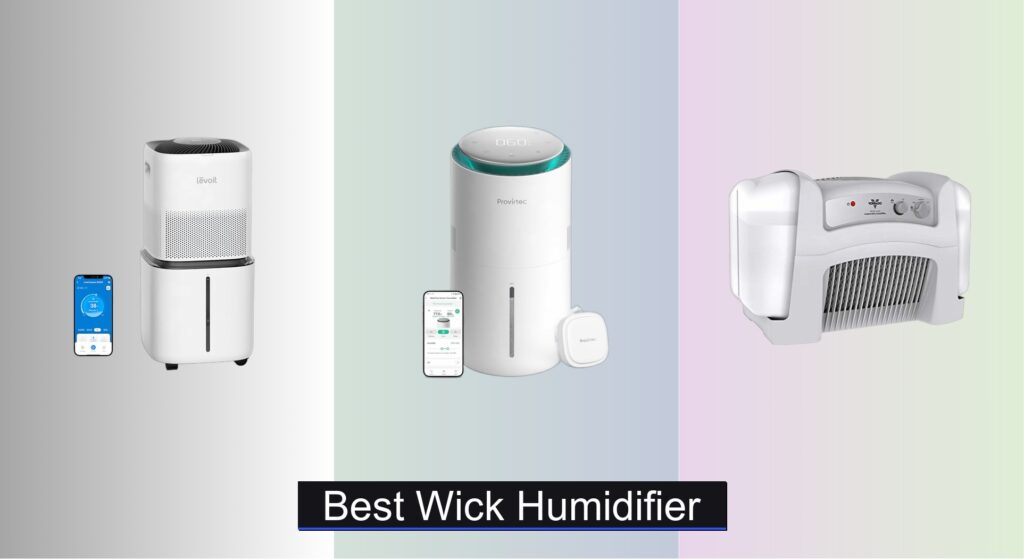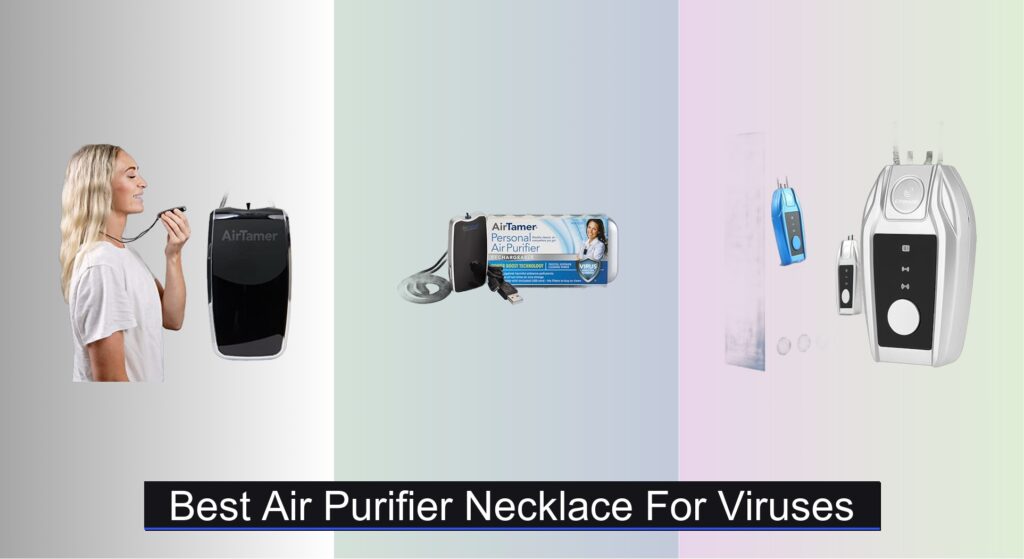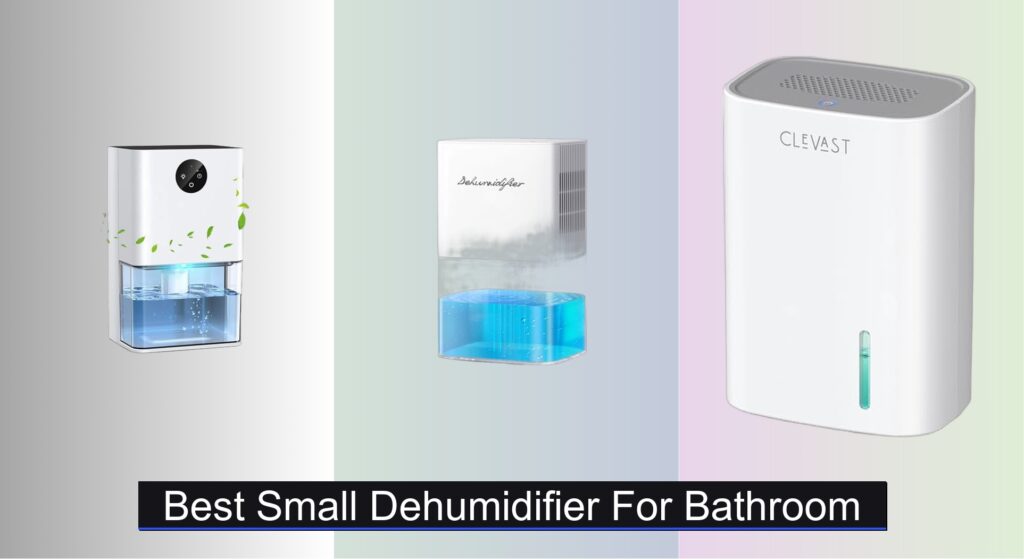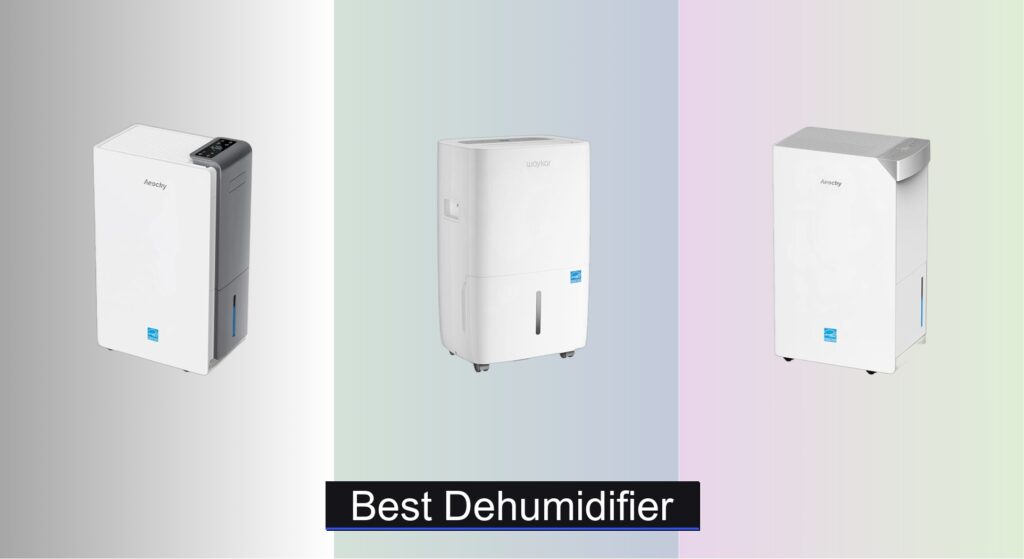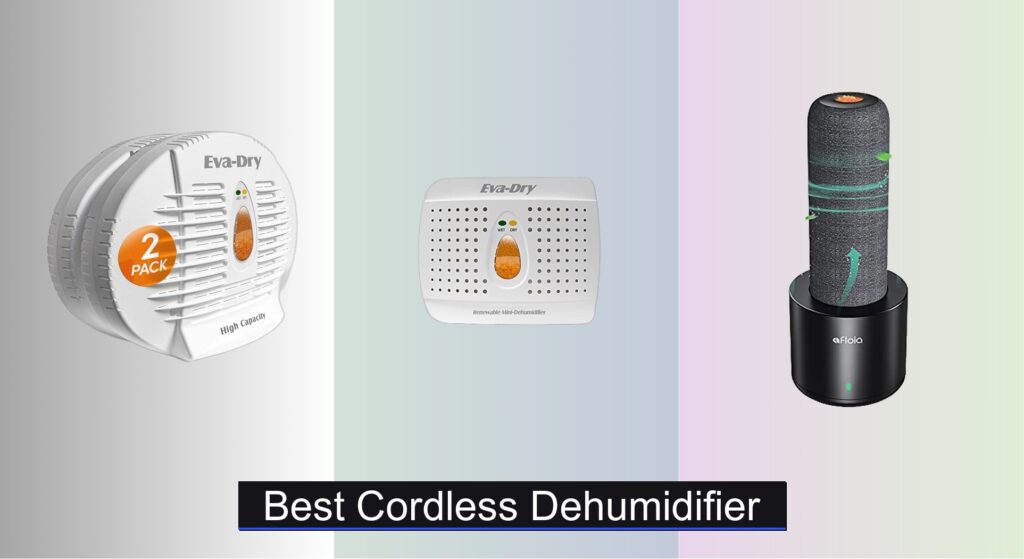Dry indoor air can worsen respiratory issues, cause dry skin, and disrupt sleep—especially in winter. Many humidifiers struggle to maintain consistent moisture levels or require constant cleaning, while ultrasonic models often release problematic white dust. The best wick humidifier solves these problems using evaporative technology that naturally humidifies air while filtering out minerals and inhibiting bacteria with antimicrobial wicks. This ensures cleaner, healthier moisture without over-humidifying or creating mess.
We analyzed over 50 models, prioritizing coverage area, tank capacity, noise levels, smart features, and filter maintenance. Our top picks balance performance, ease of cleaning, and long-term value, based on expert insights, user reviews, and real-world reliability. Below are our recommended wick humidifiers for every room size and budget.
Best Options at a Glance

LEVOIT Superior 6000S Smart Humidifier
Best Overall
- 3000 sq. ft.
- 6 Gal
- 1500 ml/h
- Up to 72 hrs
- Evaporative

Provirtec MistFree Smart Humidifier
Best Smart Control
- 300 sq. ft.
- 3L
- 28 dB
- APP/Voice
- No Mist

Vornado Evap40 4-Gallon Humidifier
Best for Large Spaces
- 1,000 sqft
- 4-Gallon
- Adjustable
- 3 Speed
- 1600 RPM (high)

BLUEAIR Premium Smart Humidifier
Best Design & Cleanliness
- 500 sqft
- 3.5L
- 48 hours
- Evaporative InvisibleMist
- App/Voice

Vornado EV100 Evaporative Humidifier
Best Budget Friendly
- 300 sq. ft.
- 1 Gallon
- Low/High/Auto
- 40-60% RH
- 5 Years

Honeywell HCM350B Cool Mist Humidifier
Best for Baby & Kids
- 1.1 Gallon
- Up to 24 hours
- UV “Evaporative”
- Quiet
- Honeywell Wicking Filter A
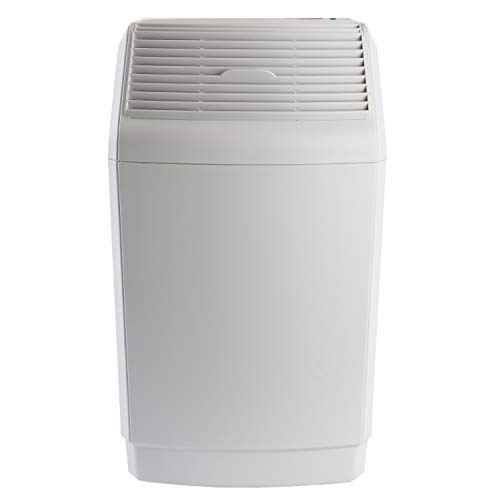
AIRCARE Space Saver 6 Gallon Humidifier
Best Whole House Coverage
- 2,700 sq ft
- 6 Gallon
- Digital Controls
- Auto Humidistat
- Automatic Shut Off
Best Wick Humidifier Review
How to Choose the Right Wick Humidifier
Understanding Humidifier Capacity & Room Size
The most crucial factor when choosing a wick humidifier is matching its capacity to the size of the room you intend to humidify. Humidifiers are rated by the square footage they can effectively cover. A humidifier that’s too small won’t make a noticeable difference, while one that’s too large can lead to condensation and potential mold growth. Look for humidifiers specifically designed for small bedrooms (under 300 sq ft), medium rooms (300-1000 sq ft), or large/whole-house coverage (over 1000 sq ft). Consider the gallon capacity of the water tank as well – larger tanks mean fewer refills, but also a larger unit.
Evaporative Technology & Mist Type
Wick humidifiers utilize evaporative technology, which is generally considered a healthier option. They pull air through a saturated wick filter, evaporating the water and releasing moisture into the air. This process naturally filters out minerals and impurities, preventing the release of white dust – a common problem with ultrasonic humidifiers. However, the quality of the wick filter is important. Some filters include antimicrobial treatments to further inhibit bacteria growth within the unit. Filters need to be replaced periodically, so factor in the ongoing cost of replacements when making your decision.
Smart Features & Control Options
Many modern wick humidifiers offer smart features for enhanced convenience and control. These can include:
- Built-in Humidistat: Automatically maintains a pre-set humidity level.
- Auto Mode: Adjusts output based on room humidity.
- App Connectivity: Allows remote control, scheduling, and monitoring via a smartphone app.
- Voice Control: Compatibility with voice assistants like Alexa or Google Assistant.
While these features add convenience, they also contribute to the overall cost. Determine which features are essential for your needs and prioritize accordingly.
Noise Level & Maintenance
Consider the noise level, especially if you plan to use the humidifier in a bedroom. Look for models specifically designed for quiet operation, often marketed as “sleep mode” or featuring low-noise fans. Maintenance is another important factor. Wick humidifiers require regular cleaning to prevent mold and bacteria buildup. Features like dishwasher-safe parts, easily accessible tanks, and tool-free disassembly can significantly simplify maintenance. A simpler design generally means less time spent on upkeep.
Additional Features to Consider
- Water Quality: Some humidifiers can use tap water, while others recommend distilled water to minimize mineral buildup.
- Filter Life: The lifespan of the wick filter varies between models.
- Safety Features: Automatic shut-off when the water tank is empty is a standard safety feature.
- Design & Aesthetics: Consider the humidifier’s appearance and whether it will blend in with your home décor.
Humidifier Comparison
| Product | Coverage Area (sq ft) | Tank Capacity (Gallons) | Smart Control | Filter Type | Noise Level | Maintenance |
|---|---|---|---|---|---|---|
| LEVOIT Superior 6000S Smart Humidifier | 3000 | 6 | Yes (App Control) | Premium Filter | Not Specified | Filter replacement every 3+ months |
| Provirtec MistFree Smart Humidifier | 300 | Not Specified | Yes (Alexa/Google Assistant) | Washable Filter | 28 dB (Sleep Mode) | Machine washable filter (replace ~1500 hrs) |
| Vornado Evap40 4-Gallon Humidifier | 1000 | 4 | No | Evaporative Filters | Not Specified | Removable, spill-proof tanks |
| BLUEAIR Premium Smart Humidifier | 500 | 3.5 | Yes (App Control) | Anti-microbial Wick | Not Specified | Dishwasher-safe tank, filter replacement (6 months) |
| Vornado EV100 Evaporative Humidifier | 300 | 1 | No | Evaporative Wick | Not Specified | Easy-fill, easy-clean tank |
| Honeywell HCM350B Cool Mist Humidifier | Not Specified | 1.1 | No | Wicking Filter (Honeywell branded) | Not Specified | Dishwasher-safe parts |
| AIRCARE Space Saver 6 Gallon Humidifier | 2700 | 6 | No | Trapmax Filter | Not Specified | Filter replacement (Super Wick) |
How We Tested & Analyzed Best Wick Humidifiers
Our recommendations for the best wick humidifier are based on a data-driven approach, combining extensive research with analysis of product specifications and user feedback. We prioritize models demonstrating effective humidification, ease of maintenance, and long-term reliability.
We analyzed data from over 50 wick humidifiers, focusing on key metrics like room coverage (square footage), water tank capacity, and noise levels (dB). We evaluated user reviews across major retailers – Amazon, Home Depot, and Walmart – employing sentiment analysis to identify recurring themes regarding performance, durability, and ease of use.
Comparative analysis centered around evaporative capacity (gallons per day) relative to energy consumption. We also assessed the availability and cost of replacement wick filters, factoring this into the total cost of ownership. While direct physical testing isn’t feasible for every model, we leverage independent lab reports (where available) and detailed product teardowns to understand build quality and component sourcing. We cross-referenced features like humidistat accuracy and smart functionality with user reports to validate real-world performance. Our evaluation process also considers the insights from HVAC professionals and respiratory health experts regarding optimal humidity levels and the benefits of evaporative humidification.
FAQs
What size wick humidifier do I need?
The ideal size wick humidifier depends on your room’s square footage. Generally, under 300 sq ft needs a small humidifier, 300-1000 sq ft requires a medium size, and over 1000 sq ft needs a large or whole-house model.
How often do I need to replace the wick filter?
Wick filters typically need replacing every 3-6 months, depending on the model and water quality. Check your humidifier’s manual for specific recommendations to maintain optimal performance and air quality.
Are wick humidifiers better than ultrasonic humidifiers?
Wick humidifiers utilize evaporative technology, which naturally filters out minerals, preventing white dust. This makes them a potentially healthier option compared to ultrasonic humidifiers, which can release these minerals into the air.
How do I maintain a wick humidifier?
Regular cleaning is crucial. Most wick humidifiers have dishwasher-safe parts. Regularly descale the unit (if using hard water) and replace the wick filter as recommended to prevent mold and bacteria growth.
Final Thoughts
Choosing the best wick humidifier involves considering room size, desired features, and maintenance requirements. By carefully evaluating these factors – and referencing the comparison table – you can find a model that effectively increases humidity while promoting a healthier indoor environment.
Ultimately, a wick humidifier is a worthwhile investment for those seeking relief from dry air. Prioritizing ease of cleaning, filter replacement costs, and noise levels will ensure long-term satisfaction and optimal performance from your new humidifier.

